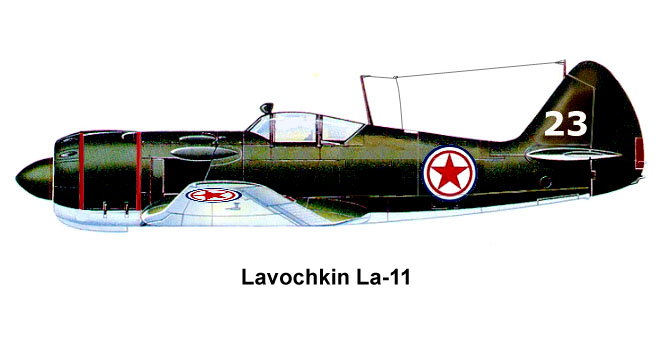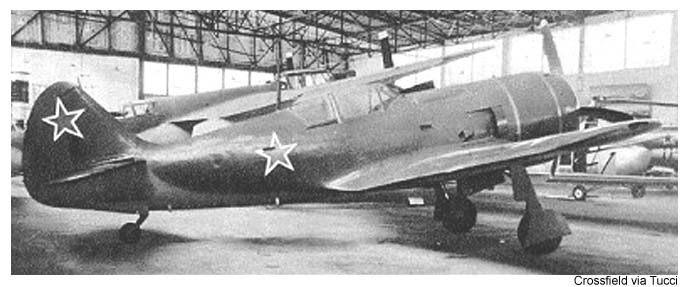|
|
Lavochkin La-9/11


Along with the various Yak fighters,
the Lavochkin La-9 and La-11 were commonly operated by the North Korean
and Chinese Air Forces. Typical of later Soviet designed piston engine
fighters, their armament was concentrated in the nose of the aircraft.
Performance was generally acceptable by WWII standards, but woefully inadequate
when faced with turbojet powered opposition. Much speculation has been
engaged in by aviation enthusiasts as to how the late war Soviet fighters
would have fared against the fighter aircraft of the western Allies. Well,
if Korea is used as an example, the answer to that question is 'miserable'.
Mustangs, Corsairs and the F-82 had little difficulty killing these Soviet
fighters. Although fast and maneuverable, they proved to quite vulnerable
to .50 caliber fire, and could not withstand more than a few hits from
20mm cannon rounds. Moreover, the Soviet style tactics and generally poor
level of training only exacerbated the ineffectiveness of these aircraft.
Typically, U.N. fighter pilots viewed the Lavochkins and the Yaks as 'meat
on the table'. One remarkable aspect of the La-9 and La-11 fighters was
their strong resemblence to the German Focke Wulf Fw 190, especially in
planform (viewed from top or bottom).
 As the last of the fine Lavochkin propeller
driven fighters, the La-11 incorporated a laminar flow wing to reduce both drag
and the onset of compressibility. Generally believed to be the equal of later
American and British piston engine fighters, the Lavochkin was never able to
establish that as fact. Today, most Russian aviation authorities point to the low
training and skill levels of the North Korean and Chinese pilots as the prime cause
of the aircraft's lack of success.
As the last of the fine Lavochkin propeller
driven fighters, the La-11 incorporated a laminar flow wing to reduce both drag
and the onset of compressibility. Generally believed to be the equal of later
American and British piston engine fighters, the Lavochkin was never able to
establish that as fact. Today, most Russian aviation authorities point to the low
training and skill levels of the North Korean and Chinese pilots as the prime cause
of the aircraft's lack of success.
|





